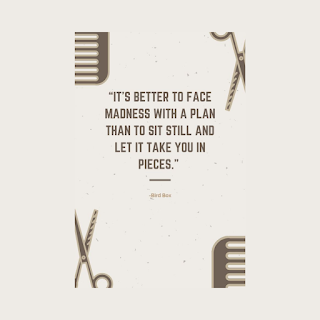Literature has come a long way from a simplistic classification of fiction and nonfiction. Literary nomenclature is constantly evolving.
Nonfiction versus Creative Nonfiction
Nonfiction, for example journalism, academic texts, and biographies, is based on fact with a purpose to express or inform. Good nonfiction should have a coherent topic and clear purpose.
Creative nonfiction combines the characteristics of traditional nonfiction with the various techniques and styles of fictional writing. With an emphasis on story and tone, creative nonfiction can be easier and more enjoyable to read than traditional nonfiction. Genres include memoirs, biographies, and personal essays (like blog posts). It is important to note that reporting factual information is still the cornerstone. Things to keep in mind when writing creative nonfiction? Fact check. Issue a disclaimer. Present the information objectively, considering your audience and possible consequences.
The concept of creative nonfiction is new to me. I've employed the technique for several years in my blog, but I didn't know this form of writing had a particular designation. My original content includes my opinions, my writing journey, and interesting book-related topics. It's not limited to these areas. I often share promotional posts from other authors. I research my topics, if research is required, and hope my readers find my musings entertaining if not informative.
Fiction
Fiction is not based on fact. The author writes about imaginary people and events captured in the form of short story, novella or novel. There are three types of fiction: literary; genre; and mainstream. Literary fiction follows non-conventional plot structures and focuses on the main character or characters. Genre fiction uses familiar templates, character archetypes, and tropes in such categories as romance, mystery, thriller, science fiction, fantasy, young adult, historical, magical realism, and speculative. Mainstream fiction is fiction that becomes extremely popular outside its core audience.
I write genre fiction, but recently I've questioned what genre applies best to my books. Hence this post. I took a short detour when I stumbled upon creative nonfiction... First, let's quickly define the main genres in genre fiction.
Romance - development of a romantic relationship moves the plot forward, ending in happily-ever-after (HEA) or happy-for-now (HFN)
Mystery - an exciting hook (like a murder) and suspenseful pacing with a clear outcome to solve the mystery
Thriller - like a mystery with more suspense and shock
Science fiction - occurs in a dystopian past or distant future with emphasis on technical or scientific advancement
Fantasy - occurs in an imaginary world, often includes mythical creatures or aspects of a medieval time period
Young adult - coming-of-age stories with a target audience of 11 to 15-year olds
Historical - incorporates real historical events or places, also the reimagining of historical events or people
Magical realism - based in the real world with elements of magic
Speculative - offers alternative realities to the past, present or future
What do I write?
Classifying a novel into the correct genre and subgenre is very important. Firstly, it defines the crucial characteristics of the story, like plot, setting, and characters. And, secondly, it contributes to reader's expectations which can impact reviews.
Now, to the crux of the matter... what do I write? Based on the provided definitions, I can easily eliminate mystery, thriller, science fiction, fantasy, young adult, historical, and speculative from the list. My stories include love as a central plot and magic in the real world so either romance or magical realism seem applicable.
In particular, my current book series is The Magicals. I introduce the reader to my magical world of vampires, wizards, and fairies. And, yes, as the series title implies, there is magic.
Romance has many subgenres... so if I dig a little deeper I find...
Romance Subgenres
All romance subgenres must include a central love story and satisfying ending (either HEA or HFN).
By age group: young adult (12-18 years old); new adult (18-29 years old); adult (over 30 years old)
By category: historical (occurs in a historic era, excluding regency); contemporary (occurs in the same time period as the author, from 1970s to present day); erotic (includes explicit sex); paranormal (includes supernatural creatures); regency (occurs during the regency era, between 1795 and 1837); and suspense (includes suspense, mystery, or thriller elements).
Conclusion
I write adult paranormal romance.
But what about fantasy or urban fantasy?
The list of romance subgenres wasn't 100% complete. That was the mainstream list. If you keep digging, then there is no end to the rabbit hole. What about romantic fantasy? What about urban fantasy? What's the difference?
This conundrum has puzzled writers and readers alike. Forgetting about romance for the moment... Paranormal stories are set in the real world with supernatural creatures. Fantasy stories are set in imaginary worlds with creatures more mythical than supernatural. Urban fantasy is paranormal with magic and includes at least one romantic storyline. I write romance novels about supernatural creatures in the real world and magic. So, I'm left with the question. Do I write paranormal or urban fantasy?
Second Conclusion
The answer is both... I write paranormal with magic so both paranormal and urban fantasy are applicable.
There are many crossovers and similarities among the different subgenres of romance. Since urban fantasy is not included in the mainstream list of romance subgenres at the moment, I write paranormal romance. All that analysis just to come to the same conclusion... which is on brand. Maya Tyler - Paranormal romance with a twist. <<sigh of relief>> I wasn't looking forward to rebranding.


















